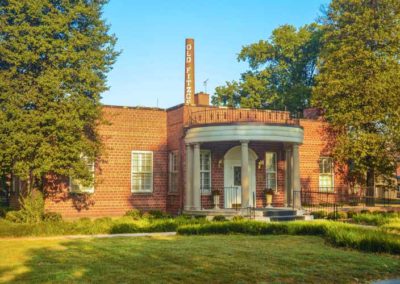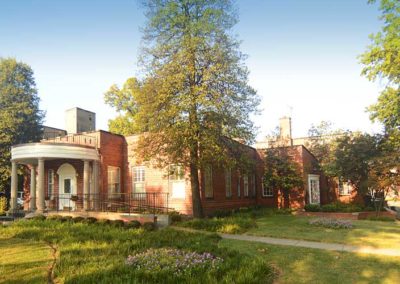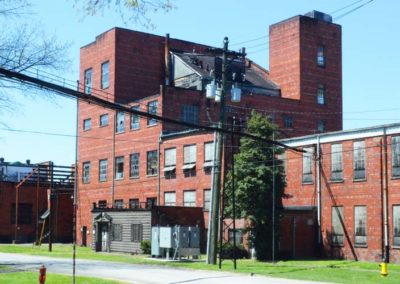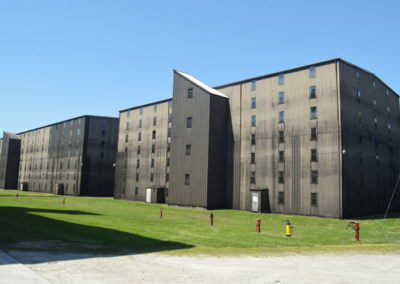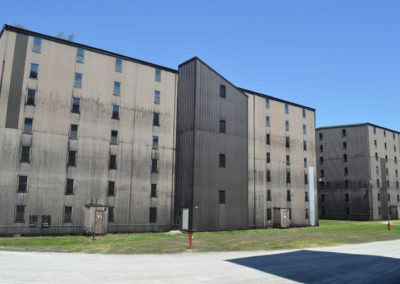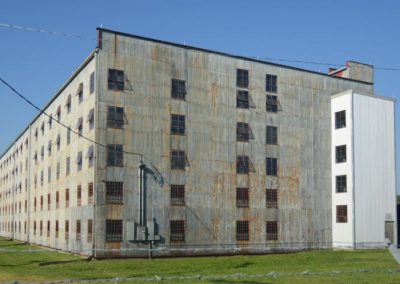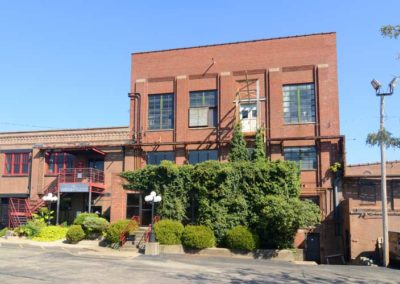Stitzel-Weller Distillery

Bourbon aging warehouses built in Louisville prior to Prohibition (c. 1920) had taken on the form of solid masonry construction, with interior racking systems that supported the roof, allowing for maximum aging capacity.
After Prohibition was repealed (c. 1933) the distilling industry in Kentucky never fully recovered.
While many of the production facilities in Louisville were demolished after Prohibition began, many were destroyed in the 1937 flood. Of the businesses that did survive Prohibition, some grew to command a huge portion of the industry market share.
Because of the decay of buildings during Prohibition, post-Prohibition distillers began replacing what was lost, while also expanding their distilling facilities. Some of the new construction favored concrete or masonry over the less expensive to build wood-framed structures, but all of those new structures tried to replicate the features developed in the earlier aging warehouses.
The last of Kentucky’s distillers’ aging-warehouses were built in the 1960s whiskey boom, the last period of capital expansion for distillers, before the decline of the industry in the 1970s and 80s, which saw the sale and abandonment of many complexes.
A “billion-dollar bourbon boom” created a resurgence in distilling the early 21st century.
The National Register of Historic Places application for the Nelson Distillery
GALLERY
Various other Shively area distilleries
In addition to the Brown-Foreman Distillery @ 2921 Dixie Hwy. there are other remnants of the post-Prohibition distilleries and rack houses along the railroad tracks that separate 7th St. Rd. & Dixie Hwy. and are connected by Wathen Ln.

